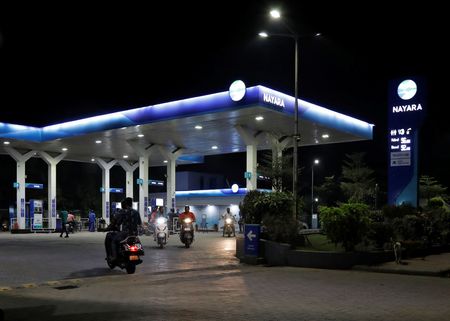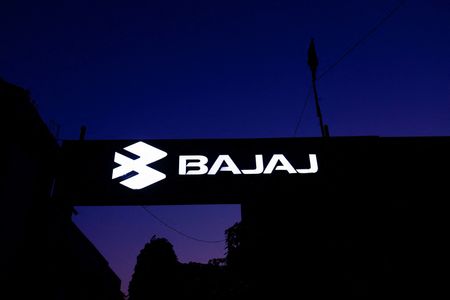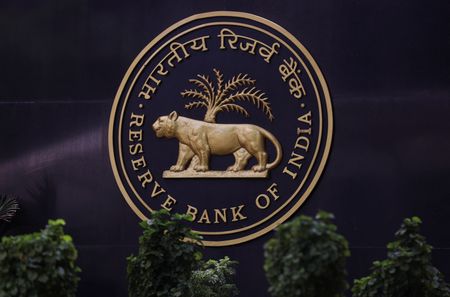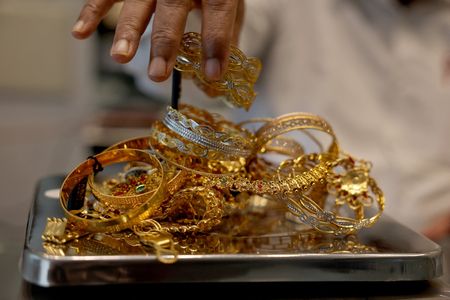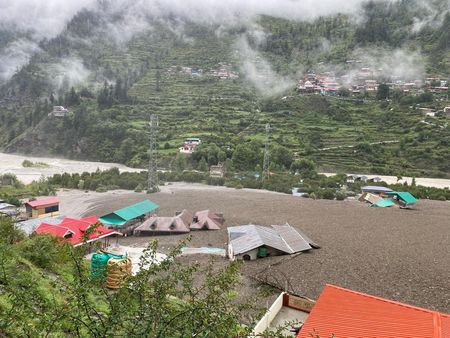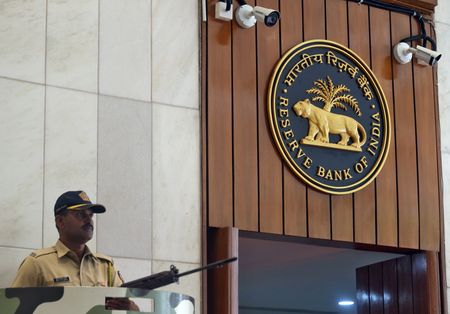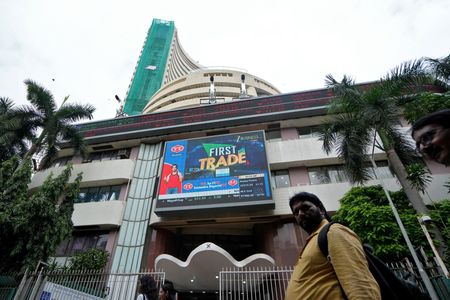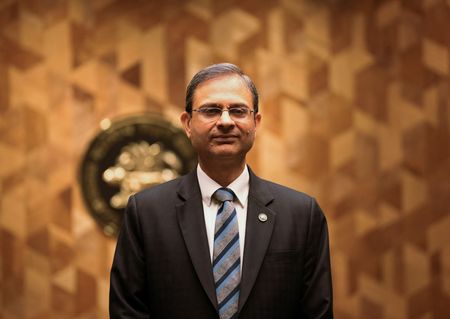(Reuters) -The Reserve Bank of India (RBI) kept its key repo rate steady at 5.50% on Wednesday, in line with expectations, as policymakers waited to see the impact of recent rate cuts and assessed risks from higher-than-expected U.S. tariffs.
The six-member rate-setting panel held the policy rate in a unanimous vote and decided to continue with a “neutral” stance.
Global trade challenges continue to linger but prospects for the Indian economy remain “bright”, Governor Sanjay Malhotra said in his statement.
A large majority of economists, 44 of 57, had forecast a pause in a July 18–24 Reuters poll, following a surprise 50 basis point cut in June.
RANEN BANERJEE, PARTNER AND ECONOMIC ADVISORY LEADER, PWC INDIA, GURUGRAM
“The Monetary Policy Committee (MPC) has rightly pushed the pause button on the policy rates, given there is no immediate need to fire another rate cut bullet.”
“Any downside on the external front is likely to be cushioned by the domestic demand uplift possibilities, with the benign inflation and (the) trickle-down of the income tax rate cuts to the lower end of income brackets, where the marginal propensity to consume is likely to be higher.”
MADHAVI ARORA, CHIEF ECONOMIST, EMKAY GLOBAL FINANCIAL SERVICES, MUMBAI
“Despite sharply lowering its inflation forecast…, RBI’s decision to keep rates steady emanates from their focus on one-year-ahead expected inflation that’s looking comfortably above 4%, while growth in their view has held up well, despite global uncertainty.”
“However, focusing on one-year-ahead expected inflation appears increasingly misplaced in an evolving world – particularly as the global landscape continues to shift toward a disinflationary bias in Asia.”
“We think, going ahead, downside risks to growth would be increasingly evident with new global resets and could still open up space for easing in remainder of the year, even though the (RBI) Governor seems to have raised the bar higher for further easing.”
SUVODEEP RAKSHIT, CHIEF ECONOMIST AT KOTAK INSTITUTIONAL EQUITIES, MUMBAI
“The bar for a dovish shift will be higher from here on and dependant on substantial downside to growth prospects.
DEVENDRA KUMAR PANT, CHIEF ECONOMIST, INDIA RATINGS & RESEARCH, GURUGRAM
“We believe there is some scope for monetary easing, however, this may unfold if the impact of tariff war on Indian economy is too adverse.”
TERESA JOHN, LEAD ECONOMIST, NIRMAL BANG, MUMBAI
“We continue to see scope for rate cuts of at least 25 bps and up to 50 bps with continued downside risks to growth and inflation.”
SUJAN HAJRA, CHIEF ECONOMIST & EXECUTIVE DIRECTOR, ANAND RATHI GROUP, MUMBAI
“This decision was shaped by continued robust economic growth, the substantial liquidity infusion following recent rate cuts, and lingering global uncertainties, most notably, (the) unpredictability in U.S. trade policy.”
“The ongoing transmission of past monetary easing and the evolving global backdrop appear to have placed the RBI firmly in wait-and-watch mode.”
“This points to room for an additional 50 bps reduction, with the possibility of a further 25 bps cut should inflation consistently remain below 4%.”
UPASNA BHARDWAJ, CHIEF ECONOMIST, KOTAK MAHINDRA BANK, MUMBAI
“The MPC’s decision to keep rates unchanged comes in the wake of global uncertainties, even as inflation remains benign and downside risks to growth persists.”
“With inflation likely to trend higher post the near term favourable trends, the bar for rate cuts ahead is set very high.”
“We can see some room for the last leg of easing only if growth momentum slows significantly.”
RADHIKA RAO, SENIOR ECONOMIST, DBS BANK, SINGAPORE
“Policy guidance was neutral in contrast to expectations of a dovish undertone.”
“With an eye on the growth momentum, we maintain our call for further easing in rest of 2025.”
GARIMA KAPOOR, ECONOMIST, INSTITUTIONAL EQUITIES, ELARA SECURITIES, MUMBAI
“Though we expected MPC to cut rates amid soaring tariff-related uncertainties and easing inflation dynamics, today’s decision to maintain the pause may also be suggestive of MPC keeping its powder dry, should things worsen on trade and tariff front.”
SAKSHI GUPTA, PRINCIPAL ECONOMIST, HDFC BANK, GURUGRAM
“We expect that going forward any space for further rate cuts is limited and will hinge on whether tariff outcomes are particularly damaging for growth.”
“As things stand today, while we expect a 25% tariff to present a 20-25 bps drag on growth, the ultimate impact could be determined by the extent of relative rupee depreciation, pace of domestic activity and impact of fiscal and monetary easing – which could act as meaningful offsets.”
“We expect GDP growth at 6.3% and inflation at 2.8% average.”
(Reporting by Manvi Pant, Kashish Tandon, Nishit Navin, Hritam Mukherjee, Ananta Agarwal, Yagnoseni Das and Meenakshi Maidas in Bengaluru, and Nikunj Ohri in New Delhi; Compiled by Dhanya Skariachan; Editing by Sumana Nandy)



